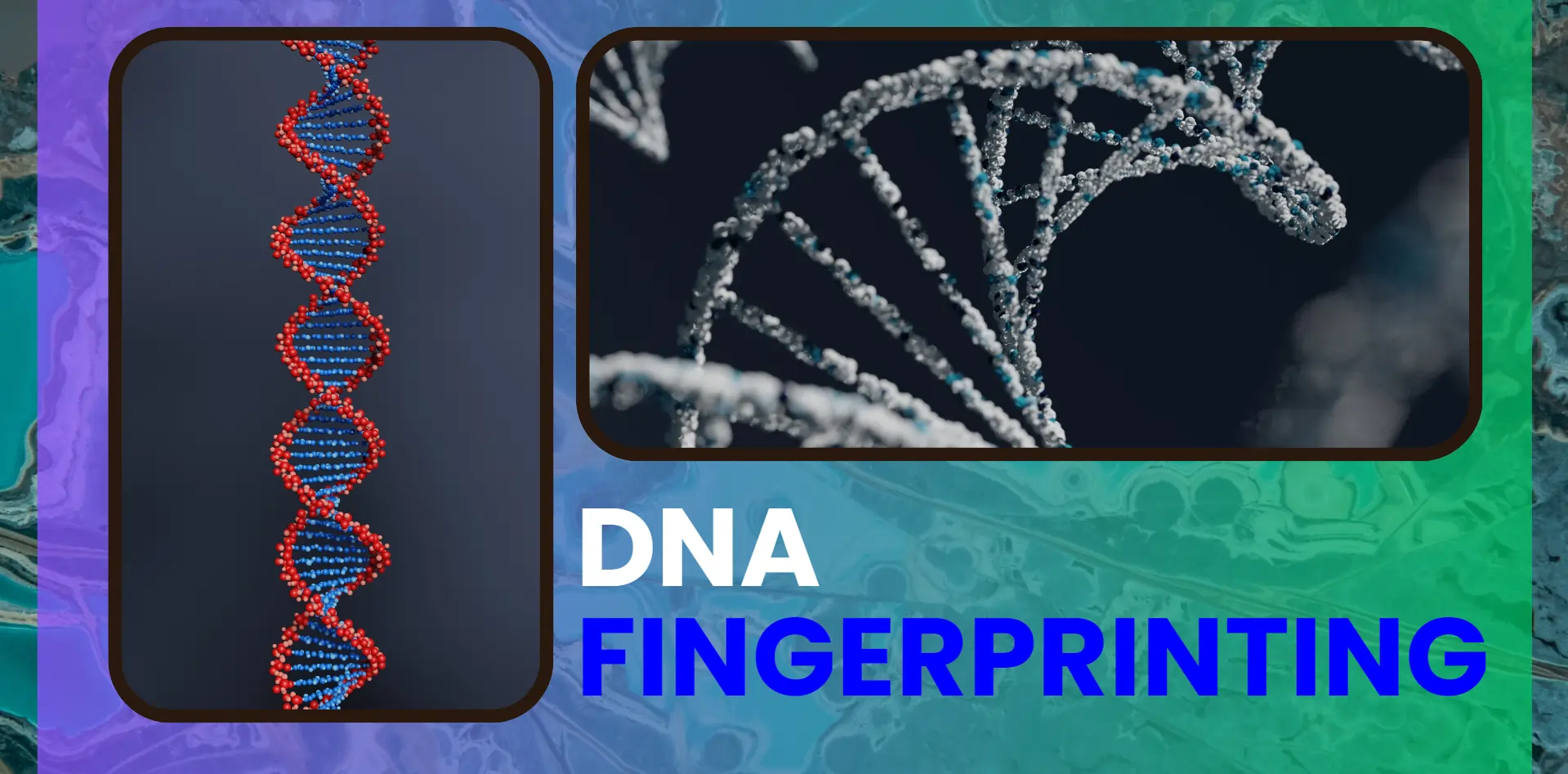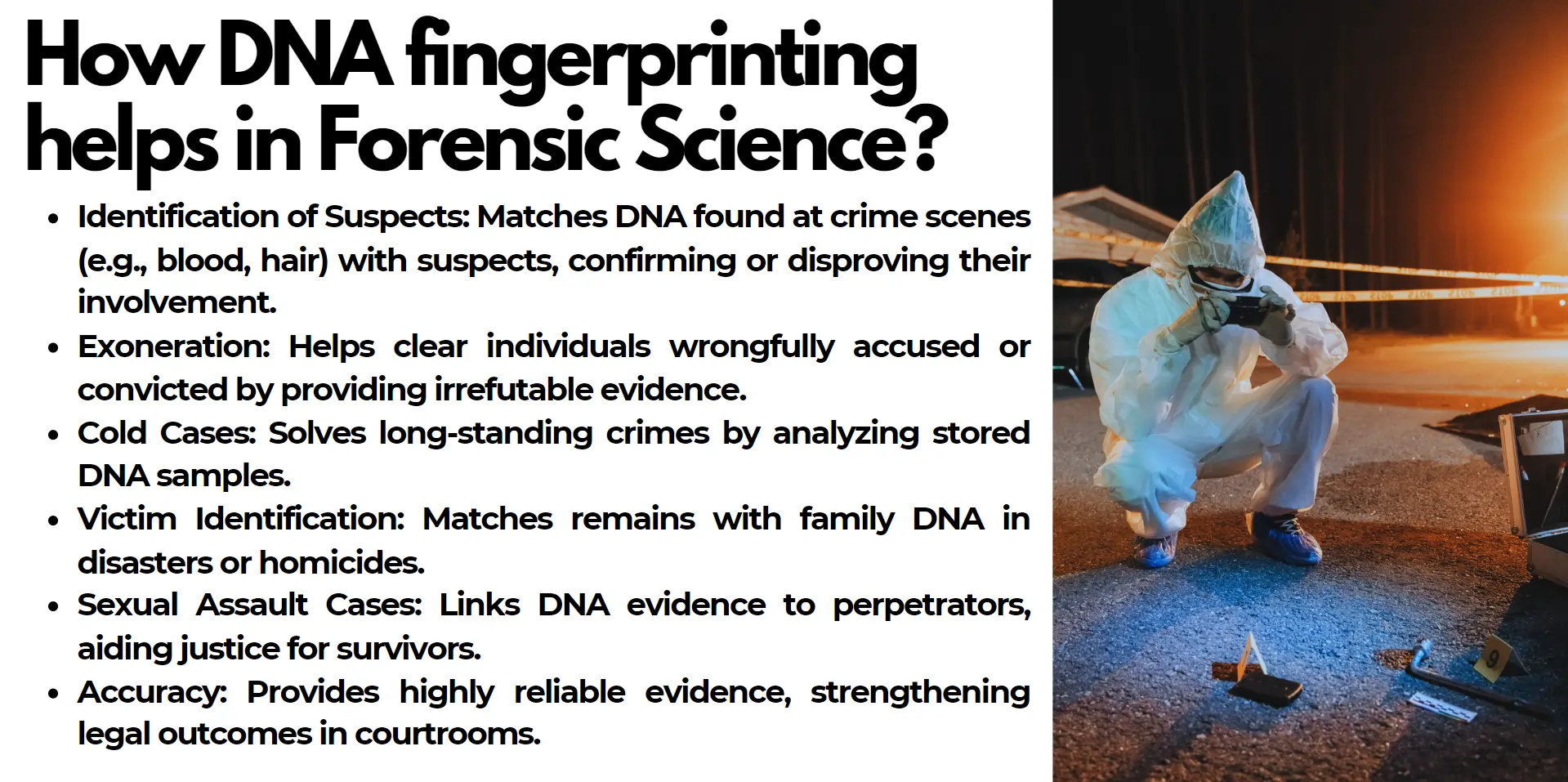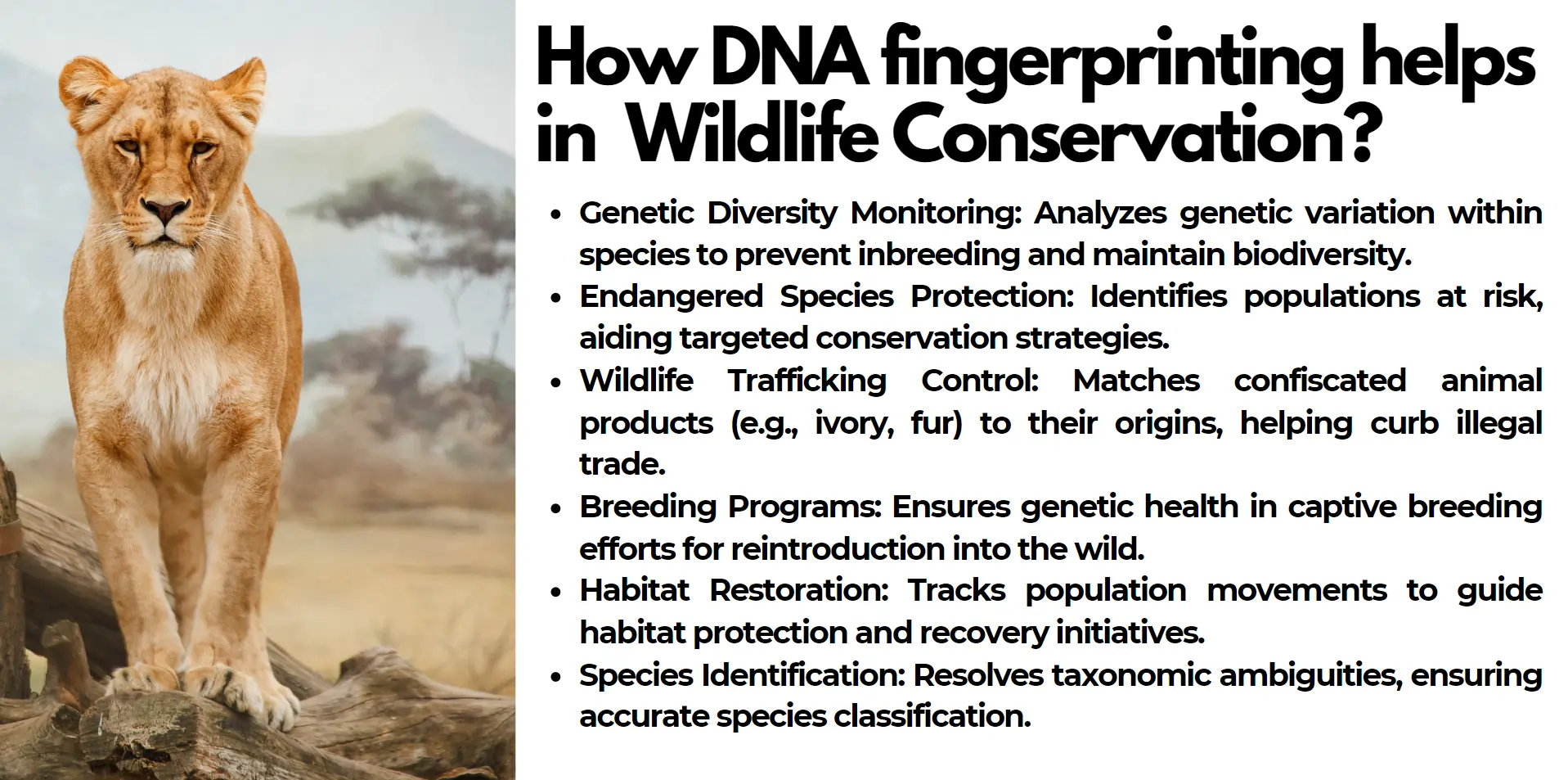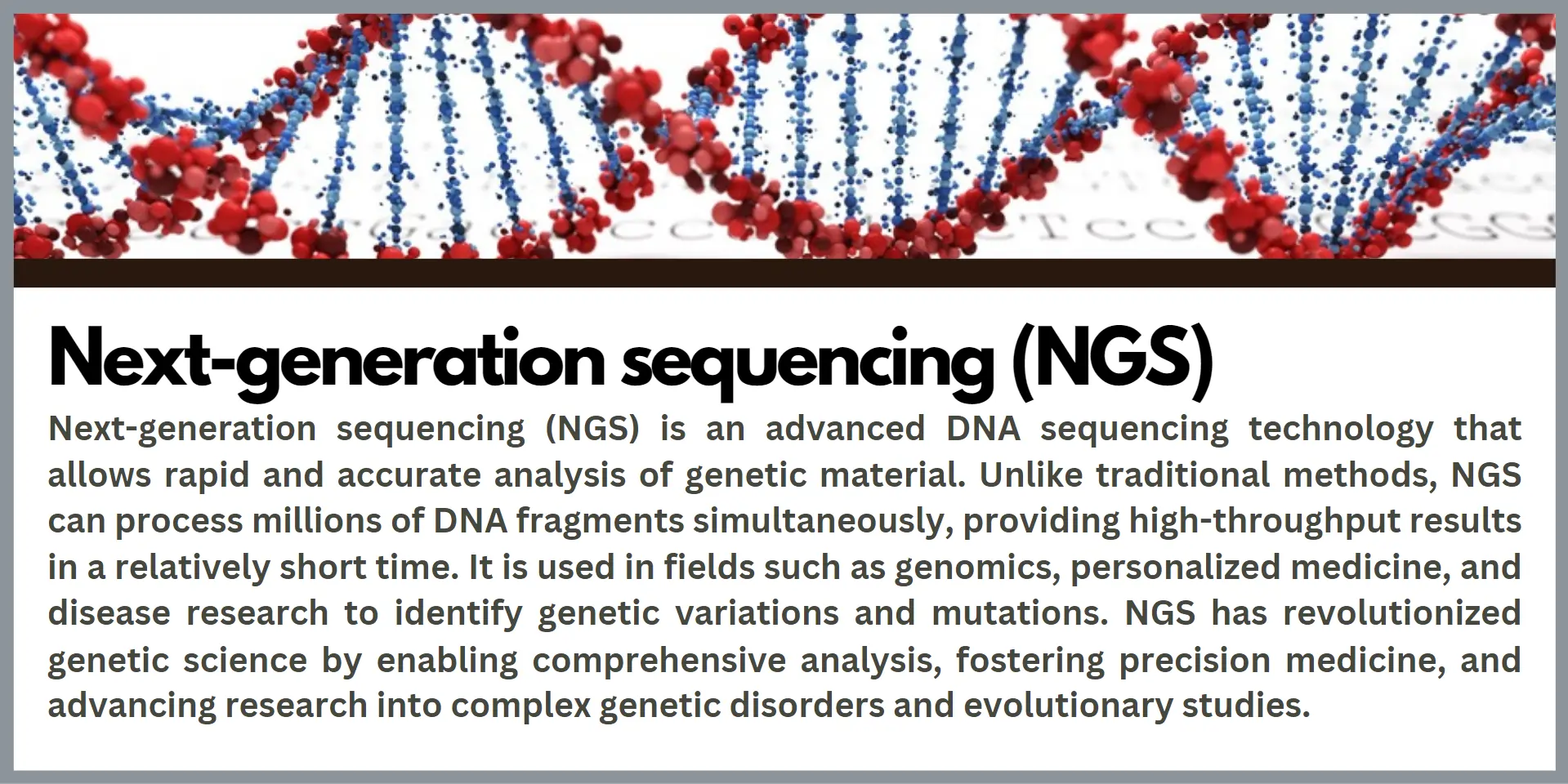DNA fingerprints can help identify people from their mortal remains at disaster sites, establish parent-child relationships, and clear wrongfully convicted criminals.

DNA fingerprinting transformed identification procedures through scientific evaluation of individual genetic profiles which was discovered in 1984. Sir Alec Jeffreys discovered DNA fingerprinting thus demonstrating that everyone possesses unique genetic patterns except for identical twins. Specific parts of the DNA contain distinct variations between individuals so DNA fingerprinting establishes a precise and trustworthy method to identify people. The technique demonstrates applications which extend into different disciplines. The forensic field heavily depends on DNA fingerprinting to link criminals to forensic evidence through precise identity comparisons. Biological relationships along with paternity testing function through this method to produce accurate results. The applications of DNA fingerprinting extend past criminal examination and paternity testing to contribute majorly in medical advancements and preserving wildlife resources as well as ancestral research. DNA fingerprinting has emerged as one of the most revolutionary developments in modern genetics through its dual capabilities of versatility and exceptional accuracy which greatly transform science and law enforcement and society.
DNA Fingerprinting - Steps And Applications
DNA fingerprinting represents a scientific identification approach that uses unique genetic patterns to distinguish between individuals. This method also functions as DNA profiling and genetic fingerprinting. The technique makes use of individual-specific DNA patterns. Specified DNA sections function as the key area of examination because each person has unique non-coding region variations. Short Tandem Repeats (STRs) function as individual markers which appear in repeating sequences throughout these specific regions to distinguish genetic codes between different people. Scientists evaluate these DNA markers to build accurate and reliable genetic barcodes that function as DNA profiles.
The molecular structure of life undergoes analysis during DNA fingerprinting tests since this forensics method explores DNA blueprints instead of skin ridge patterns as traditional fingerprinting does. DNA technology has revolutionized three major disciplines which include forensic science, medicine and genealogy to enable crucial functions such as crime investigation and victim identification and biological relationship evaluation.
Discovery and History
British geneticist Sir Alec Jeffreys discovered DNA fingerprinting at the University of Leicester during 1984. In his research on the myoglobin gene Jeffreys discovered DNA repetition patterns that strongly distinguished between different individuals. Through his discovery he identified unique patterns in DNA which matched the distinctiveness of standard fingerprints. The discovery revealed the basic concepts that later developed into DNA fingerprinting.
DNA fingerprinting technology experienced its first major use through a pivotal immigration case in England which established paternity for residential rights of a boy. The use of DNA fingerprinting techniques started receiving global recognition in forensic science disciplines. DNA evidence played a key role in identifying the actual murderer in the 1986 Narborough murder case which led to the release of an innocent arrested person.
Since scientists first discovered DNA fingerprinting significant developments have occurred within its application. Nevertheless the combination of Polymerase Chain Reaction (PCR) technology and STR analysis strengthened DNA fingerprinting standards at speed and precision while expanding its accessibility. Scientists utilize DNA fingerprinting as an essential genetic approach to tackle multiple fields including criminal investigations as well as medicine, wildlife protection and historical research. The discovery of DNA fingerprinting has evolved into a fundamental scientific tool which transformed social practices while keeping future advancement potential alive.
The Science behind DNA Fingerprinting
Scientists use DNA fingerprinting through their comprehension of DNA structures and acknowledgment of unique genetic sequences which separate each person. DNA exists as two intertwined strands in the shape of a double helix which includes nucleotide molecules of adenine (A), thymine (T), cytosine (C) and guanine (G). Every organism possesses unique genetic instructions which DNA nucleotides arrange into specific sequences throughout the DNA strand. Every human share nearly identical DNA sequences although the non-coding regions between individuals show large differences in their genetic makeup.

The DNA fingerprinting analysis starts with extracting DNA from specimens including blood, hair or saliva samples. The DNA extraction procedure leads to DNA amplification through the use of Polymerase Chain Reaction (PCR) which creates numerous copies of specified STR regions. The DNA amplification process makes it possible to analyze even minimally sized or damaged DNA types with high effectiveness.
DNA STR regions become visible after amplification through the execution of gel electrophoresis or capillary electrophoresis. The sorting methods divide DNA fragments by size to generate distinctive DNA profiles. DNA profiles contain distinctive patterns which enable scientists to check DNA information for identification purposes.
Foundational to early DNA fingerprinting samples were analyzed through Restriction Fragment Length Polymorphism (RFLP) before its usage diminished in modern DNA fingerprinting practices. The implementation of STR profiling techniques has led to a quicker and improved identification system that can be used by a broader range of professionals.
The technological breakthrough has multiple uses that include forensic crime solving and genetic disorder identification alongside paternity identification and ancestry investigations. DNA fingerprinting serves as a perfect demonstration of molecular biology fulfilling practical needs through its high precision and reliability measurements and thus demonstrating genetic science's impactful role in today's society.
Applications of DNA Fingerprinting
DNA fingerprinting remains an essential technological asset across numerous fields because it provides highly accurate methods for human DNA identification along with genetic kinship examinations. DNA fingerprinting revolutionized diverse scientific sectors such as forensics and medicine as well as wildlife conservation despite its unique capability. The main uses of this advanced technique include:
Forensic Science
DNA fingerprinting functions as one of the primary forensic investigation tool used in contemporary world. By analyzing DNA profiles from crime scenes and suspects' profiles, this technology works to identify probable criminals even if the DNA samples originate from blood, hair, saliva or skin cells. DNA fingerprinting stands as a vital crime-fighting tool which enables case resolution and conviction of offenders as well as the clearance of unfairly accused persons. Through this method professionals can connect DNA from remains with surviving relatives for disaster situations providing distinct closure in critical cases.

Paternity and Relationship Testing
DNA fingerprinting typically finds its use as a tool to establish biological association between individuals. To prove genetic relationship paternity testing examines the DNA profiles between a child and the presumed father. DNA fingerprinting serves beyond establishing paternity to establish both familial relations through sibling connections as well as ancestral relationships. This testing method finds broad usage across legal matters as well as immigration cases and adoption investigations.
Medical Applications
The DNA fingerprinting technology provides major contributions to medical investigations and healthcare institutions. Early detection of inherited diseases becomes possible through DNA fingerprinting because the technique helps identify genetic mutations. It enables doctors to create customized treatment plans. Through DNA profile matching organ transplantation establishes necessary compatibility between donors and recipients so recipients can avoid organ rejection. The analysis of DNA produces vital information about genetic markers which enables scientists to discover new ways for gene therapy and precision medicine development.
Wildlife Conservation
The technique acts as a crucial tool for saving endangered species from extinction. DNA diversity analysis among natural communities enables conservation experts to create breeding protocols which stop individual group relatedness and sustain species diversity. DNA profiling helps to identify animal products from wildlife trafficking cases through genetic matching of original sources for effective law enforcement.

Agriculture and Livestock Management
As one of the applications of DNA fingerprinting is that it improves agriculture through genetic development crop and livestock. DNA fingerprinting enables researchers to recognize preferable genetic characteristics together with supporting plant or animal breed documentation. This application helps farmers implement environmental friendly agricultural methods to overcome present-day food shortages.
Advantages of DNA Fingerprinting
DNA fingerprinting stands as an acclaimed leading technique of identification and genetic analysis because it provides wide-ranging advantages within various fields.
Its excellence for precision represents one of its most valuable benefits. The unique genetic makeup of every person apart from identical twins enables DNA printing identification to be exceptionally exact. The high level of reliability gained through DNA fingerprinting now guides forensic work so authorities can successfully link suspects to crime scene evidence in cases that previously appeared impossible to solve.
Another advantage is its versatility. The technique of DNA fingerprinting extends its use across multiple fields which include paternity testing, medical diagnostics and wildlife conservation. DNA testing produces absolute results that prove crucial for establishing paternity in legal and genetic verification procedures. Medical personnel use DNA analysis for genetic disorder detection and organ transplant donor assessment which leads to vital life-saving medical operations.
DNA analysis enables the assessment of genetic diversity thus advancing species conservation as well as wildlife protection from trafficking incidents. The technique helps agriculture through crop and livestock enhancement as well as sustainable practices that ensure food availability.
DNA extraction through this technique becomes possible without invasive methods because it operates on small degraded biological samples. Genetic research has become more precise along with more efficient through its widespread adoption which also directly helps society tackle its significant needs.
Limitations and Challenges
The DNA fingerprinting technique proves effective for advanced research and analysis yet it faces specific operational boundaries. The main concern emerges from potential sample contamination together with degradation events. The exposure of DNA evidence to moisture and heat outside environments leads to poor integrity and erroneous analysis.
Human mistakes during testing periods act as limitations for DNA analysis procedures. Erroneous legal proceedings along with major investigative impact can result from insufficient evidence control and laboratory testing mistakes that also lead to misinterpretation of results. A complicated method requires specialized professionals to handle it since vital consequences stem from mistakes occurring during its application.
The challenges stem from ethical considerations about DNA data management. Genetic information placed in databases creates privacy concerns because individuals show reluctance to allow storage of DNA data. The valid concern remains about unauthorized data misuse including surveillance along with discrimination and other improper usage of such information.
DNA fingerprinting continues to stay unavailable for particular areas because insufficient funds and technical requirements create access barriers in underdeveloped regions. Particular regions face implementation challenges due to mandatory sophisticated tools and expert operators needed for the technique.
Future Prospects
DNA fingerprinting technology will experience impressive future developments because of current scientific and technological advances. Next-generation sequencing (NGS) shows promise as a key DNA analysis technology because it provides scientists with an unmatched combination of speed and precision in their DNA analyses. Through NGS DNA profiling techniques become more extensive while requiring less expense and time than current methods while delivering superior results.
The criminal analysis and fracture detection of compromised DNA materials will benefit from upcoming technological developments which deliver trustworthy outcomes in complex forensic scenarios. The automated profiling operations of DNA fingerprinting systems become possible when artificial intelligence works alongside DNA fingerprinting methods leading to speedier and more efficient police investigations. Real-time DNA analysis at criminal scenes will be possible through this integrated method while expanding DNA profiling capabilities.

The development of personalized medicine brings about new optimistic horizons. DNA fingerprinting in combination with genetic research developments functions as a vital tool for individualized medical treatment which enhances effectiveness and reduces side effects for patients. Scientists can determine disease-specific genetic indicators through this discovery which enables them to find and prevent diseases in advance.
DNA fingerprinting extends its potential applications into two areas: helping researchers understand human movement patterns and conserving species while fighting wildlife trafficking. Soaring opportunities require an ethical understanding to protect privacy and achieve fair accessibility along with delivering all possible advantages from this revolutionary technology.
Conclusion
Through its precise applications DNA fingerprinting has transformed scientific and social spheres as a whole. Its impact stretches across diverse sectors because DNA fingerprinting enables the resolution of crimes along with medical progress as well as environmental conservation work. The future allows DNA fingerprinting to create new opportunities by combining innovative techniques that will advance numerous disciplines for better global life outcomes.